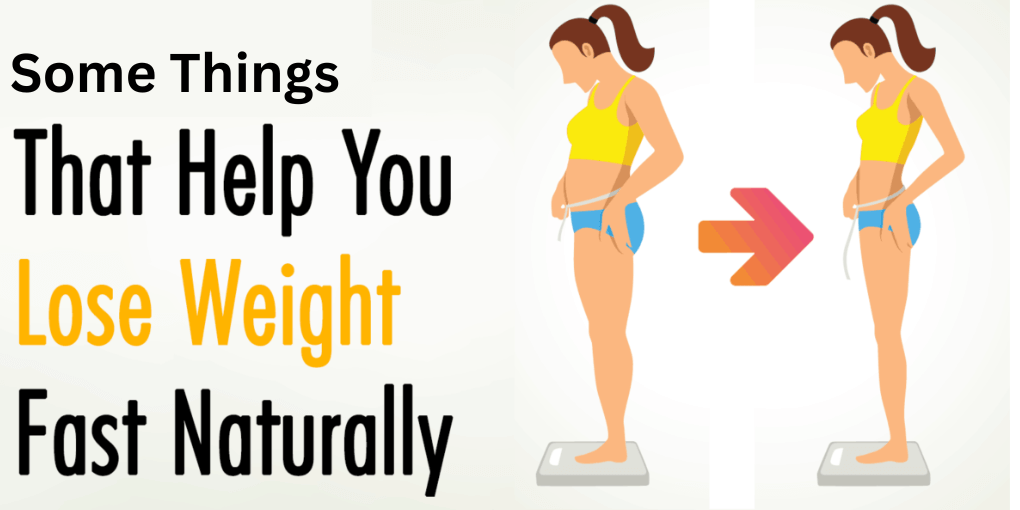Looking to shed those extra pounds quickly? Find out how to lose weight fast with our comprehensive guide, featuring proven tips and techniques for successful weight loss.

In today’s fast-paced world, losing weight has become a necessity. Everyone wants to look fit and healthy, but due to a lack of time or knowledge, it becomes challenging to achieve this goal.
However, to maintain a healthy lifestyle, losing weight is essential.
We’ll talk about some quick weight loss ideas and techniques in this blog post.
Table of Contents
ToggleSetting Realistic Goals
When it comes to losing weight, setting realistic goals is key to staying motivated and maintaining a positive mindset throughout your journey.
Realistic expectations can prevent you from sticking to your weight loss strategy by causing anger and disappointment.
Follow these tips to set achievable goals and pave the way for success:
Assess Your Current Situation
Start by assessing your current weight, body composition, and overall health.
Consult with a healthcare professional or a registered dietitian to determine a healthy weight range for your body type and height.
Understanding where you stand will help you set goals that are realistic and attainable.
Consider Your Lifestyle and Commitments
Take into account your lifestyle, daily routine, and any commitments you may have.
Consider factors such as work, family responsibilities, and social activities.
Setting goals that align with your lifestyle will increase the chances of sticking to them in the long run.
Break It Down
Instead of focusing solely on your ultimate weight loss goal, break it down into smaller, more manageable milestones.
Aim to lose a certain amount of weight per week or month, and celebrate each milestone along the way.
This approach will keep you motivated and provide a sense of accomplishment as you progress.
Be Specific and Measurable
Make your goals specific and measurable. Instead of simply stating, “I want to lose weight,” be more specific about how much and by when you want to lose it.
For example, “I want to lose 10 pounds in the next two months.” Having a clear target will help you track your progress and stay accountable.
Consider Non-Scale Victories
While weight loss is often associated with the number on the scale, remember to consider non-scale victories as well.
These can include improvements in energy levels, clothing fitting better, increased strength and endurance, or improved overall well-being.
Recognizing and celebrating these victories will boost your motivation and make your journey more fulfilling.
Benefits of fast weight loss vs. slow and steady progress
When it comes to weight loss, two common approaches are fast weight loss and slow and steady progress.
Both methods have their advantages and considerations. Let’s explore the benefits of each approach:
Benefits of Fast Weight Loss
- Quick Results: One of the primary benefits of fast weight loss is seeing noticeable results in a shorter period. This can provide motivation and a sense of accomplishment, boosting confidence along the way.
- Enhanced Motivation: Rapid progress can help individuals stay motivated and committed to their weight loss journey. Seeing the pounds drop quickly can inspire individuals to continue making healthy choices and maintain their momentum.
- Jumpstart to a Healthier Lifestyle: Fast weight loss can serve as a jumpstart to adopting a healthier lifestyle. It can help individuals break old habits and develop new ones, setting a solid foundation for long-term success.
- Positive Psychological Impact: Achieving rapid weight loss goals can have a positive psychological impact, improving self-esteem and mental well-being.
Benefits of Slow and Steady Progress
- Sustainable Lifestyle Changes: Slow and steady progress allows individuals to focus on making sustainable lifestyle changes rather than relying on quick fixes. It promotes the development of healthy habits that can be maintained long-term, leading to lasting weight loss.
- Healthy Body Composition: Gradual weight loss tends to preserve lean muscle mass and promote fat loss, whereas rapid weight loss may result in more muscle loss. Slow progress allows the body to adjust, adapt, and maintain a healthy body composition.
- Long-Term Weight Maintenance: Research suggests that individuals who lose weight gradually are more likely to keep the weight off in the long run. Slow progress allows for better adjustment and maintenance of a healthy weight, reducing the likelihood of weight regain.
- Healthy Habits Formation: Slow and steady progress provides an opportunity to establish and solidify healthy habits, such as regular exercise, balanced nutrition, and mindful eating. These habits become ingrained and contribute to overall well-being beyond just weight loss.
Tips for setting achievable weight loss goals
Setting achievable weight loss goals is crucial for maintaining motivation and ensuring long-term success. Here are some tips to help you set realistic and attainable goals:
Be Specific
Define your weight loss goal with precision. Instead of saying, “I want to lose weight,” specify how much weight you aim to lose, such as “I want to lose 10 pounds.”
Break it Down
Divide your overall weight loss goal into smaller, manageable milestones.
Set short-term goals that you can achieve within a reasonable time frame. For example, focus on losing 2 pounds per week.
Make it Measurable
Use objective measures to track your progress. Instead of relying solely on weight, consider measuring your progress using body measurements, clothing size, or body fat percentage.
Be Realistic
Set goals that are attainable and realistic. Consider factors such as your current weight, health condition, lifestyle, and time constraints. Overly ambitious ambitions might cause disappointment and dissatisfaction.
Set a Timeline
Establish a timeline for achieving your weight loss goals. Having a target date can provide a sense of urgency and help you stay accountable. However, be flexible and allow room for adjustments as needed.
Focus on Behavior
Instead of solely focusing on the number on the scale, shift your attention to adopting healthy behaviors.
Set goals related to nutrition, physical activity, and self-care habits. For example, aim to exercise for 30 minutes a day or include more fruits and vegetables in your meals.
The Problem with Crash Diets
Crash diets typically involve drastically reducing your calorie intake or eliminating entire food groups.
While they may lead to quick weight loss in the short term, they can have several negative consequences:
- Nutritional Deficiencies: Crash diets often restrict essential nutrients, leading to deficiencies in vitamins, minerals, and other vital compounds. This can compromise your overall health and weaken your immune system.
- Muscle Loss: Rapid weight loss from crash diets often includes significant muscle loss. This can lower your metabolic rate and make it harder to maintain weight loss in the long run.
- Slower Metabolism: Crash diets can slow down your metabolism as your body adapts to the low-calorie intake. This makes it easier to regain weight once you return to a normal eating pattern.
- Lack of Sustainability: Crash diets are not sustainable in the long term. They often rely on strict rules and severe food restrictions that are difficult to maintain for extended periods. This can lead to a cycle of weight loss and regain, commonly known as “yo-yo dieting.”
- Negative Psychological Effects: The restrictive nature of crash diets can trigger feelings of deprivation, guilt, and failure. This unhealthy relationship with food can lead to disordered eating patterns and negatively impact your mental well-being.
How to Avoid Crash Diets
To avoid the pitfalls of crash diets and achieve sustainable weight loss, follow these guidelines:
- Choose a Balanced Approach: Opt for a well-rounded, balanced eating plan that includes a variety of whole foods from different food groups. Focus on nourishing your body with nutrient-dense options that provide essential vitamins, minerals, and fiber.
- Gradual Calorie Reduction: Instead of drastically slashing your calorie intake, aim for a moderate calorie deficit. Consult with a healthcare professional or a registered dietitian to determine an appropriate calorie range for your weight loss goals.
- Include All Food Groups: Avoid eliminating entire food groups unless medically necessary. Each food group offers unique nutrients that contribute to overall health. Strive for a balanced diet that includes whole grains, lean proteins, healthy fats, fruits, and vegetables.
- Portion Control: To control your calorie consumption, use portion control. Focus on eating until you feel satisfied, not overly full. Be mindful of your hunger and fullness cues, and avoid eating out of boredom or emotional triggers.
- Seek Professional Guidance: If you’re unsure about the best approach to weight loss, consult with a healthcare professional or a registered dietitian. Based on your particular requirements, tastes, and any underlying medical concerns, they can offer you individualized assistance.
Conclusion
In conclusion, Losing weight requires a lot of effort and time. With these tips, you can make the process easier.
Set a realistic goal, watch what you eat, stay hydrated, exercise regularly, and get enough sleep.
These small changes in your lifestyle can make a big difference in achieving your weight loss goals.
Remember, consistency is the key, and losing weight is a journey, not a destination.




